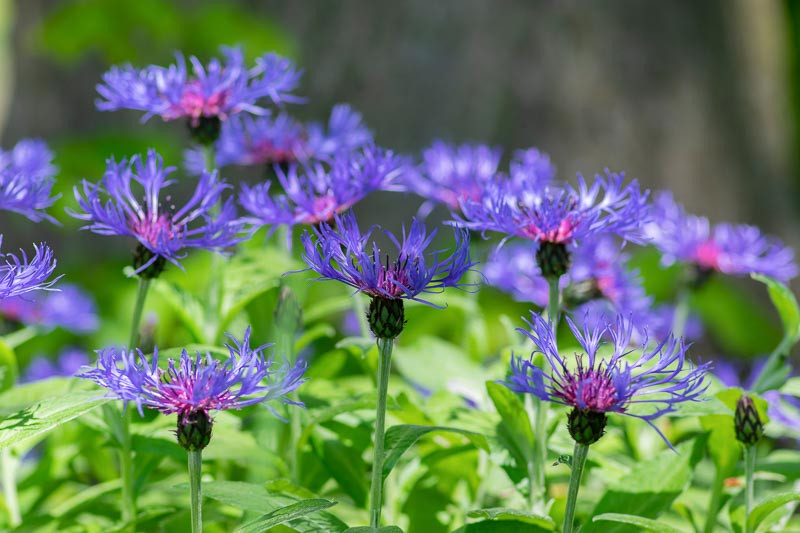Introduction
Centaurea montana, commonly known as the mountain cornflower or perennial cornflower, is a delightful addition to UK gardens. This hardy perennial is cherished for its striking blue flowers, which bloom from late spring to early summer. With its ease of care and charming appearance, Centaurea montana has become a favorite among gardeners. In this article, we will explore the best practices for planting, growing, and caring for Centaurea montana in UK gardens, ensuring that this beautiful plant thrives and adds vibrant color to your outdoor space.
Planting Centaurea montana
Choosing the Right Location
Centaurea montana thrives in full sun to partial shade. For optimal growth and flowering, select a spot in your garden that receives at least six hours of sunlight per day. The plant prefers well-drained soil but can tolerate a range of soil types, including clay, loam, and sandy soils. Ensure the location is not prone to waterlogging, as this can cause root rot and other issues.
Soil Preparation
Before planting, prepare the soil by removing any weeds and loosening it to a depth of about 30 cm (12 inches). Incorporate organic matter such as compost or well-rotted manure to improve soil fertility and drainage. If your soil is heavy clay, adding grit or sand can enhance drainage.
Planting Process
Centaurea montana can be planted in either spring or autumn. For spring planting, wait until the danger of frost has passed. For autumn planting, aim to get the plants in the ground at least six weeks before the first expected frost to allow them time to establish.
- Dig a hole twice the width of the plant’s root ball and slightly deeper.
- Place the plant in the hole, ensuring the top of the root ball is level with the surrounding soil.
- Fill the hole with soil, gently firming it around the base of the plant.
- Water thoroughly to settle the soil and remove any air pockets.
Growing Centaurea montana
Watering
While Centaurea montana is drought-tolerant once established, it requires regular watering during its first growing season to establish a robust root system. Water the plant deeply once a week, providing about 2.5 cm (1 inch) of water. Reduce watering frequency as the plant matures, but continue to water during prolonged dry periods.
Feeding
Centaurea montana benefits from a balanced fertilizer applied in early spring as new growth begins. A general-purpose, slow-release fertilizer will provide the necessary nutrients for healthy growth and abundant flowering. Avoid excessive feeding, as this can lead to lush foliage at the expense of flowers.
Mulching
Apply a 5-7.5 cm (2-3 inch) layer of mulch around the base of the plant in spring. Mulching helps retain soil moisture, suppress weeds, and regulate soil temperature. Organic mulches such as compost, bark chips, or straw are excellent choices.
Caring for Centaurea montana
Pruning and Deadheading
Regular deadheading encourages continuous blooming and prevents the plant from self-seeding excessively. Remove spent flowers by cutting the stem back to a healthy set of leaves. In late autumn, after the plant has finished flowering, cut back the foliage to ground level to tidy up the garden and prepare the plant for winter.
Dividing
Centaurea montana can become congested over time, leading to reduced flowering. Dividing the plant every three to four years helps maintain its vigor. The best time to divide is in early spring or late summer.
- Dig up the plant and gently separate the root clumps using a sharp knife or spade.
- Replant the divisions at the same depth they were growing previously, spacing them about 30-45 cm (12-18 inches) apart.
- Water well after planting and apply a light mulch to help retain moisture.
Pest and Disease Management
Centaurea montana is relatively pest-free, but it can occasionally be affected by aphids, slugs, and snails. Monitor your plants regularly and take action at the first sign of pests. Aphids can be controlled with insecticidal soap or a strong jet of water. For slugs and snails, handpicking or using organic slug pellets can be effective.
The plant is also susceptible to powdery mildew, especially in humid conditions. Ensure good air circulation around the plants by spacing them adequately and avoiding overhead watering. If powdery mildew appears, treat with a fungicide or remove and dispose of affected leaves.
Conclusion
Centaurea montana is a versatile and resilient plant that brings a splash of color to UK gardens. With proper planting, growing, and care, this perennial cornflower can thrive and bloom year after year. By following the guidelines outlined in this article, you can enjoy the beauty and charm of Centaurea montana in your garden, creating a vibrant and welcoming outdoor space. Whether you are a seasoned gardener or a beginner, Centaurea montana is a rewarding plant that will add lasting appeal to your garden landscape.


